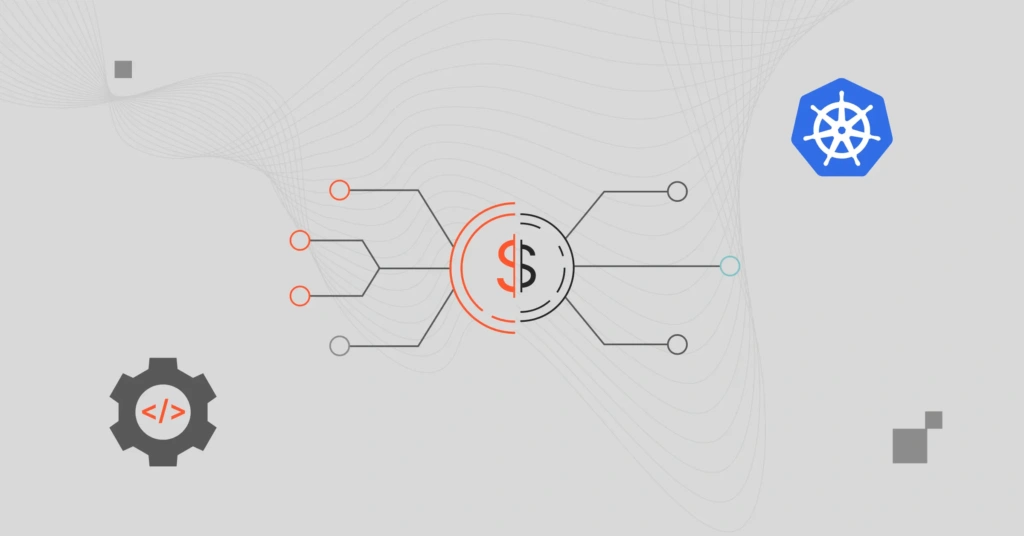Kubernetes has emerged as the clear cornerstone for orchestrating containerized applications. However, alongside its numerous benefits, Kubernetes introduces its own set of complexities, particularly in monitoring and managing costs.
The dynamic nature of Kubernetes — where resources can be scaled up or down in response to demand — makes traditional cost monitoring methods inadequate. Enterprises often struggle to track and allocate expenses accurately across multiple teams and services, leading to budget overruns and inefficient resource utilization.
Recognizing the need for specialized tools to address these challenges, solutions like CloudZero are becoming increasingly vital. CloudZero offers tailored monitoring capabilities that provide deep insights into cloud spending, specifically designed to handle the complexities of Kubernetes environments.
With its ability to track detailed cost metrics in real-time, CloudZero empowers businesses to understand and optimize their cloud expenditure.
This introduction sets the stage for a discussion on advanced monitoring and cost reporting in Kubernetes, highlighting the critical role of dedicated platforms like CloudZero in achieving cost efficiency and operational excellence in cloud-native ecosystems.
The Need For Advanced Monitoring In Kubernetes
The architecture of Kubernetes, designed for deploying, scaling, and managing containerized applications, inherently presents a challenge for traditional cost-monitoring approaches. This is due to Kuberentes’ ability to dynamically adjust resources based on real-time demand, which can result in significant fluctuations in costs.
Without a robust monitoring system, these cost variations can become difficult to manage, leading to unexpected expenditures and resource inefficiencies. Beyond that, Kubernetes clusters often host a multitude of containers and microservices, further complicating the visibility of resource usage and associated costs.
Each microservice might scale differently, use different resources, and thus incur varying costs. Traditional tools, which typically monitor less complex environments, cannot provide the granularity needed to track such diverse and rapid changes effectively.
The necessity for advanced monitoring solutions in Kubernetes is clear. Enterprises require detailed insights into where and why costs are occurring, and how they correlate with resource usage and application performance.
This level of understanding is crucial for maintaining budget control, ensuring efficient resource use, and ultimately achieving cost optimization in cloud environments. Effective cost management in Kubernetes supports financial health and drives better architectural and operational decisions.
Key Metrics For Monitoring Kubernetes Costs
When managing costs within Kubernetes, focusing on several key metrics is crucial for effective monitoring.
These metrics include:
- CPU Usage: This metric measures the processing power required by applications running in pods, which directly influences costs.
- Memory Usage: This metric tracks the amount of RAM utilized by applications, critical for managing the cost implications of resource consumption.
- Storage Usage: Particularly important are persistent volume claims, as data storage costs can escalate with increased usage.
- Network I/O: The data transfer in and out of Kubernetes pods is significant, especially when applications frequently communicate with external services.
Monitoring these metrics allows enterprises to pinpoint which resources are driving costs and adjust their allocation accordingly. Setting up alerts for spikes in usage can preemptively manage potential cost overruns, ensuring that resource usage remains aligned with budgetary constraints and operational needs.
This targeted approach to monitoring not only helps in optimizing Kubernetes deployments for performance but also enhances cost efficiency.
Tools And Techniques For Cost Reporting In Kubernetes
For effective cost reporting in Kubernetes, enterprises can utilize a combination of native tools and third-party solutions to gain comprehensive visibility into their spending.
Key tools include:
- Kubernetes Dashboard: This native tool provides a basic overview of cluster resources, allowing users to see resource usage at a glance, which is crucial for initial cost assessments.
- Metrics Server: Collects resource metrics from Kubelet and aggregates them, offering more detailed insights that are essential for effective cost monitoring.
- Prometheus: A powerful third-party tool that excels in collecting and storing real-time metrics in a time-series database, which is invaluable for detailed analysis and forecasting.
- Grafana: Often used in conjunction with Prometheus, this tool provides advanced visualizations of metrics that aid in understanding cost implications and trends.
By integrating these tools, organizations can enhance their ability to report and analyze Kubernetes costs, leading to more informed decision-making and optimized cloud resource management.
Integrating CloudZero For Enhanced Cost Visibility
Integrating CloudZero into a Kubernetes environment significantly enhances cost visibility and control. CloudZero is designed to provide deep insights into cloud spending, making it an invaluable platform for enterprises looking to optimize their Kubernetes costs.
CloudZero’s integration enables businesses to meticulously track general cloud expenditures and drill down into the specific costs associated with Kubernetes operations.
This includes a detailed analysis of costs per pod, service, or even individual container, allowing for precise allocation and accountability. The platform can seamlessly aggregate data from various sources, including direct Kubernetes metrics and other cloud billing data, to present a unified view of cloud expenses.
One of the standout features of CloudZero is its real-time alerting capability. Organizations can set customized thresholds for spending alerts, ensuring that any unexpected spikes in resource usage or costs can be immediately identified and addressed. This proactive monitoring helps prevent budget overruns and promotes a more dynamic approach to cost management.
Beyond that, CloudZero’s predictive analytics offers forward-looking insights critical for long-term budgeting and planning.
By analyzing trends and usage patterns, CloudZero helps organizations forecast future costs, making it easier to plan for growth while maintaining cost efficiency. This integration empowers enterprises to not just react to cost issues, but to anticipate and strategize effectively, ensuring optimal financial and operational health.
Best Practices For Cost Management In Kubernetes Using CloudZero
For enterprises aiming to master cost management in Kubernetes with the aid of CloudZero, several best practices can ensure success:
- Regular Cost Monitoring: Establish routine checks using CloudZero’s dashboards to stay updated on spending trends and resource utilization.
- Custom Alerts: Configure custom alerts in CloudZero to immediately receive notifications about deviations from expected spending, which can help in quickly addressing inefficiencies.
- Cost Allocation Tags: Utilize cost allocation tags within Kubernetes that CloudZero can track to gain insights into which departments or projects are driving costs.
By leveraging CloudZero’s comprehensive cost management features, organizations can optimize their Kubernetes infrastructure and track costs and expenses in real-time. Implementing these practices will lead to more predictable and controlled cloud spending.
For a hands-on understanding of how CloudZero can transform your Kubernetes cost management,  . This step will help you see firsthand the benefits and features that make CloudZero an essential tool for your cloud financial operations.
. This step will help you see firsthand the benefits and features that make CloudZero an essential tool for your cloud financial operations.








